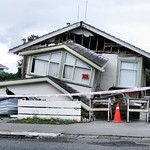SACRAMENTO, Calif. – New rules that govern the California driving public will go in effect on January 1, 2013. These rules are the product of legislation passed by the Legislature and signed into law by Governor Edmund G. Brown Jr. in 2012.
“The changes to California’s traffic safety laws are designed to protect the motoring public,” said California Highway Patrol (CHP) Commissioner Joe Farrow. “Citizens are encouraged to familiarize themselves with these new laws in advance of the new year. Adhering to the rules of the road may save your life, or the lives of your fellow motorists.”
The following are summaries of some of the new laws taking effect January 1, 2013:
- Driving Under the Influence : (AB 2020, Pan)
- The law no longer allows a person who has been arrested and is suspected of driving under the influence (DUI) of drugs, the option of a urine test. Prior to this change, a person had the option of submitting either urine or blood to determine the drug content of their blood.
- Charter-Party Carriers of Passengers: Alcoholic Beverages: Open Containers : (AB 45, Chesbro)
- This new law prohibits underage drinking in charter-party carriers (limos, buses, etc.) and makes the carrier and driver responsible for communicating this to their passengers. The law also requires a designee, who is at least 25 years of age, to be present whenever there are passengers who are under 21 years of age on board the vehicle and alcohol is being transported. The designee shall be responsible for ensuring the rules are followed, and the safety of the underage passengers throughout the duration of the trip.
- Electronic Wireless Communications : (AB 1536, Miller)
- This law allows California drivers to use hands-free technology to talk and text while driving. This will require the use of a device that is specifically designed and configured to allow voice-operated and hands-free operation to dictate, send or listen to a text-based communication. The device is required to also be used in a voice-operated, hands-free manner to be in compliance with the law.
- Financial Responsibility and Insurance : (AB 1708, Gatto)
- Drivers will now have the option of providing proof of insurance or verification of financial responsibility on an electronic device (smartphone, tablet, etc.), when it is requested by law enforcement.
- High Occupancy Toll Lanes : (AB 2405, Blumenfield)
- This law creates the Choose Clean Cars Act, which allows cars with a Clean Air Vehicle Sticker free access to carpool lanes that are converted to High Occupancy Toll (HOT) lanes.
- Autonomous Vehicles : (SB 1298, Padilla)
- This new law allows driverless cars to be operated on public roads for testing purposes, provided that each vehicle has a fully licensed and bonded operator in the driver’s seat to take control if necessary. The bill also instructs the Department of Motor Vehicles to adopt regulations that govern the licensing, bonding, testing and operation of autonomous vehicle technology.
- Emergency Services: Seniors : (SB 1047, Alquist)
- Similar to an AMBER Alert, the CHP would activate a “Silver Alert” upon request if a person, age 65 or older, is reported missing to a law enforcement agency and that agency determines that certain criteria is met. The criteria includes: the person is missing under unexplained or suspicious circumstances or the law enforcement agency believes the person is in danger due to age, health, mental or physical disability, environment or weather conditions; the person is in the company of a potentially dangerous person; or there are other factors indicating that the person may be in peril. Finally, there is information available, if given to the public, may assist in the safe recovery of the missing person.
- Driver License : (AB 2189, Cedillo)
- This law allows a driver’s license applicant who provides satisfactory proof that his or her presence in the United States is authorized under federal law, but who is not eligible for a social security account number, is eligible to receive an original driver’s license if he or she meets all other qualifications for licensure.
- Automated Traffic Enforcement Systems : (SB 1303, Simitian)
- This new law establishes consistency in the operations of red-light enforcement cameras throughout the state by requiring governmental agencies to follow specified guidelines regarding intersections, signage, and the notice to appear.
- License Plates: Obstruction or Alteration : (AB 2489, Hall)
- This new law prevents the altering and positioning of license plates from its original markings and clarifies the penalty imposed for obscuring the readability of license plates.
- Child Passenger Restraints : (AB 1452, Hill)
- Hospitals, clinics, and birthing centers will now be required to provide and discuss contact information regarding child safety seat requirements, installation, and inspection to parents and caregivers upon discharge of a child, if the child is less than eight years of age.
- There are also two new laws related to recreational off-highway vehicles.
- One (AB 1595, Cook) defines an off-highway motor vehicle to include a recreational off-highway vehicle (ROV) and establishes additional requirements governing its safe operation. The other law (AB 1266, Cook), which goes into effect July 1, 2013, prohibits a passenger in an ROV from riding in a seat location not designed and provided by the manufacturer. It also prohibits operation of the ROV if the passenger is not seated with both feet on the floorboard and able to grab the occupant handhold with the seat belt and shoulder belt or safety harness fastened.
- Additional Registration Fees : (AB 1404, Feuer)
- This law authorizes three counties (Los Angeles, San Diego and San Bernardino) to increase vehicle registration fees to help fund vehicle theft programs. Increases would be from $1 to $2 for passenger vehicles, and $2 to $4 for commercial vehicles.
- Inflatable Restraint Systems : (AB 1854, Brownley)
- This law makes it illegal for a person to knowingly distribute or sell a previously deployed air bag or component that will no longer meet the original equipment form, function or proper operation.
- Driving Under the Influence: Alcoholic Beverage or Drug : (AB 2552, Torres)
- Although this change in the law does not take effect until January 1, 2014, it distinguishes whether an individual was arrested for driving under the influence of alcohol or drugs. Ultimately this change, singling out drugs with its own subsection in the Vehicle Code, will make it easier to track the prevalence of drugged driving in California. This new law, coupled with the efforts requiring the use of Ignition Interlock Devices, will help reduce impaired driving throughout California.
These points are only a synopsis of some of the new laws adopted. For complete information on chaptered bills enacted in 2012, please refer to the Legislative Counsel website at http://www.LegInfo.ca.gov.

 Since the basic idea of insurance is “what if?”, disaster preparedness is a natural topic. With some events, like earthquakes, it’s not a question of if but when. Preparedness isn’t a goal but a process. The idea is to keep working on it little by little. While our family may be better prepared than most, I still find it hard to stay with it. The Insurance Institute has put together an iPhone app that helps you work through a plan to get yourself and your family prepared.
Since the basic idea of insurance is “what if?”, disaster preparedness is a natural topic. With some events, like earthquakes, it’s not a question of if but when. Preparedness isn’t a goal but a process. The idea is to keep working on it little by little. While our family may be better prepared than most, I still find it hard to stay with it. The Insurance Institute has put together an iPhone app that helps you work through a plan to get yourself and your family prepared. When payrolls are low, rates tend to go up since there’s less payroll to spread out the costs of injuries. Here in California, we have seen a couple of double-digit increases in the advisory rates put out by the
When payrolls are low, rates tend to go up since there’s less payroll to spread out the costs of injuries. Here in California, we have seen a couple of double-digit increases in the advisory rates put out by the